From the ocean to the brain: harnessing the power of marine algae for neuroprotection and therapeutic advances
Recent investigations have shed light on the potential of seaweed, an abundant source of bioactive compounds, to mitigate and combat neurodegenerative diseases. In this comprehensive review, the acc
[...] Read more.
Recent investigations have shed light on the potential of seaweed, an abundant source of bioactive compounds, to mitigate and combat neurodegenerative diseases. In this comprehensive review, the accumulating evidence supporting the neuroprotective properties of seaweed-derived compounds is evaluated and their putative mechanisms of action are elucidated. The background of this review encompasses the general understanding of neurodegenerative diseases as debilitating conditions characterized by the progressive loss of nerve cell function and viability in the central nervous system. Furthermore, the global prevalence of these diseases, encompassing Alzheimer’s disease, Parkinson’s disease, and Huntington’s disease, and the persistent absence of effective treatments are emphasized. To address this critical issue, an innovative avenue of research is explored by investigating the potential of seaweed and its diverse array of bioactive compounds. By examining the available literature, the evidence supporting the neuroprotective effects of seaweed-derived compounds is consolidated. These bioactive constituents exhibit promising properties in preventing and mitigating neurodegeneration. Mechanistically, their actions involve intricate pathways that contribute to neuronal survival, reduction of oxidative stress, inhibition of neuroinflammation, and modulation of protein aggregation processes. This review provides a comprehensive analysis of the mechanisms underlying the neuroprotective effects of seaweed compounds. In conclusion, this review highlights the potential of seaweed as a valuable source of neuroprotective compounds and underscores the advancements made in this burgeoning field. The identification and elucidation of the mechanisms through which seaweed compounds exert their neuroprotective effects hold promise for the development of novel therapeutic interventions. These findings transcend disciplinary boundaries, offering insight into the potential application of seaweed-derived compounds as a valuable resource for combating neurodegenerative diseases across scientific domains.
Leonel Pereira, Ana Valado
Recent investigations have shed light on the potential of seaweed, an abundant source of bioactive compounds, to mitigate and combat neurodegenerative diseases. In this comprehensive review, the accumulating evidence supporting the neuroprotective properties of seaweed-derived compounds is evaluated and their putative mechanisms of action are elucidated. The background of this review encompasses the general understanding of neurodegenerative diseases as debilitating conditions characterized by the progressive loss of nerve cell function and viability in the central nervous system. Furthermore, the global prevalence of these diseases, encompassing Alzheimer’s disease, Parkinson’s disease, and Huntington’s disease, and the persistent absence of effective treatments are emphasized. To address this critical issue, an innovative avenue of research is explored by investigating the potential of seaweed and its diverse array of bioactive compounds. By examining the available literature, the evidence supporting the neuroprotective effects of seaweed-derived compounds is consolidated. These bioactive constituents exhibit promising properties in preventing and mitigating neurodegeneration. Mechanistically, their actions involve intricate pathways that contribute to neuronal survival, reduction of oxidative stress, inhibition of neuroinflammation, and modulation of protein aggregation processes. This review provides a comprehensive analysis of the mechanisms underlying the neuroprotective effects of seaweed compounds. In conclusion, this review highlights the potential of seaweed as a valuable source of neuroprotective compounds and underscores the advancements made in this burgeoning field. The identification and elucidation of the mechanisms through which seaweed compounds exert their neuroprotective effects hold promise for the development of novel therapeutic interventions. These findings transcend disciplinary boundaries, offering insight into the potential application of seaweed-derived compounds as a valuable resource for combating neurodegenerative diseases across scientific domains.
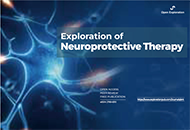 Retraction: Diffusion magnetic resonance imaging-based surrogate marker in amyotrophic lateral sclerosisOpen AccessRetractionEditorial OfficePublished: December 29, 2023 Explor Neuroprot Ther. 2023;3:513
Retraction: Diffusion magnetic resonance imaging-based surrogate marker in amyotrophic lateral sclerosisOpen AccessRetractionEditorial OfficePublished: December 29, 2023 Explor Neuroprot Ther. 2023;3:513 Breaking the amyotrophic lateral sclerosis early diagnostic barrier: the promise of general markersOpen AccessReviewAmyotrophic lateral sclerosis (ALS) is a severe neurodegenerative disease that is associated with selective and progressive loss of motor neurons. As a consequence, the symptoms of ALS are muscle cr [...] Read more.Yizhou Lu ... Qinming ZhouPublished: December 27, 2023 Explor Neuroprot Ther. 2023;3:497–512
Breaking the amyotrophic lateral sclerosis early diagnostic barrier: the promise of general markersOpen AccessReviewAmyotrophic lateral sclerosis (ALS) is a severe neurodegenerative disease that is associated with selective and progressive loss of motor neurons. As a consequence, the symptoms of ALS are muscle cr [...] Read more.Yizhou Lu ... Qinming ZhouPublished: December 27, 2023 Explor Neuroprot Ther. 2023;3:497–512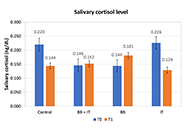 Effects of acoustic neurostimulation in healthy adults on symptoms of depression, anxiety, stress and sleep quality: a randomized clinical studyOpen AccessOriginal ArticleAim: To evaluate the application of an acoustic neurostimulation program with binaural beats and isochronic tones isolated or in association, and its effects on sleep, depression, anxiety, and st [...] Read more.Sandro A. Kanzler ... Rui Daniel PredigerPublished: December 26, 2023 Explor Neuroprot Ther. 2023;3:481–496
Effects of acoustic neurostimulation in healthy adults on symptoms of depression, anxiety, stress and sleep quality: a randomized clinical studyOpen AccessOriginal ArticleAim: To evaluate the application of an acoustic neurostimulation program with binaural beats and isochronic tones isolated or in association, and its effects on sleep, depression, anxiety, and st [...] Read more.Sandro A. Kanzler ... Rui Daniel PredigerPublished: December 26, 2023 Explor Neuroprot Ther. 2023;3:481–496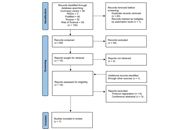 Effectiveness of dry needling on the treatment of patients with multiple sclerosis: systematic reviewOpen AccessSystematic ReviewAim: The aim of this study is to review the effectiveness of dry needling in patients with multiple sclerosis (MS). Methods: PubMed, Physiotherapy Evidence Database (PEDro), Web of Science, [...] Read more.Ali Mutlu ... Buket BüyükturanPublished: December 26, 2023 Explor Neuroprot Ther. 2023;3:470–480
Effectiveness of dry needling on the treatment of patients with multiple sclerosis: systematic reviewOpen AccessSystematic ReviewAim: The aim of this study is to review the effectiveness of dry needling in patients with multiple sclerosis (MS). Methods: PubMed, Physiotherapy Evidence Database (PEDro), Web of Science, [...] Read more.Ali Mutlu ... Buket BüyükturanPublished: December 26, 2023 Explor Neuroprot Ther. 2023;3:470–480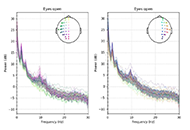 Hyperbaric oxygen therapy—a new hope for Alzheimer’s patients: a case report and literature reviewOpen AccessCase ReportThe currently available pharmacological anti-dementia treatments provide only temporary and limited benefits. Not surprisingly, patients and professionals increasingly explore non-pharmacological in [...] Read more.Elizabeta B. Mukaetova-Ladinska ... Qadeer ArshadPublished: December 22, 2023 Explor Neuroprot Ther. 2023;3:457–469
Hyperbaric oxygen therapy—a new hope for Alzheimer’s patients: a case report and literature reviewOpen AccessCase ReportThe currently available pharmacological anti-dementia treatments provide only temporary and limited benefits. Not surprisingly, patients and professionals increasingly explore non-pharmacological in [...] Read more.Elizabeta B. Mukaetova-Ladinska ... Qadeer ArshadPublished: December 22, 2023 Explor Neuroprot Ther. 2023;3:457–469 Minimum spanning tree analysis for epilepsy magnetoencephalography (MEG) dataOpen AccessOriginal ArticleAim: Recently, brain network research is actively conducted through the application of graph theory. However, comparison between brain networks is subject to bias issues due to topological charac [...] Read more.Sunhan Shin ... Jaehee KimPublished: December 13, 2023 Explor Neuroprot Ther. 2023;3:446–456
Minimum spanning tree analysis for epilepsy magnetoencephalography (MEG) dataOpen AccessOriginal ArticleAim: Recently, brain network research is actively conducted through the application of graph theory. However, comparison between brain networks is subject to bias issues due to topological charac [...] Read more.Sunhan Shin ... Jaehee KimPublished: December 13, 2023 Explor Neuroprot Ther. 2023;3:446–456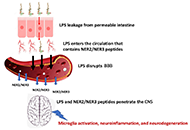 Unique cerebrospinal fluid peptides: potential amyotrophic lateral sclerosis biomarkers and etiological factorsOpen AccessOriginal ArticleAim: Amyotrophic lateral sclerosis (ALS) is a progressive disease of unknown etiology, characterized by degeneration of motoneurons and skeletal muscle strength decline that progressively evolves [...] Read more.Uri Wormser ... Yoram FinkelsteinPublished: December 12, 2023 Explor Neuroprot Ther. 2023;3:435–445
Unique cerebrospinal fluid peptides: potential amyotrophic lateral sclerosis biomarkers and etiological factorsOpen AccessOriginal ArticleAim: Amyotrophic lateral sclerosis (ALS) is a progressive disease of unknown etiology, characterized by degeneration of motoneurons and skeletal muscle strength decline that progressively evolves [...] Read more.Uri Wormser ... Yoram FinkelsteinPublished: December 12, 2023 Explor Neuroprot Ther. 2023;3:435–445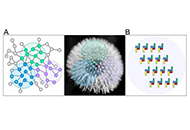 Further arguments in favor of the biological relevance of purinergic receptors: the novel emergence of a purinergic signatureOpen AccessCommentaryCinzia Volonté, Rafael FrancoPublished: November 29, 2023 Explor Neuroprot Ther. 2023;3:429–434
Further arguments in favor of the biological relevance of purinergic receptors: the novel emergence of a purinergic signatureOpen AccessCommentaryCinzia Volonté, Rafael FrancoPublished: November 29, 2023 Explor Neuroprot Ther. 2023;3:429–434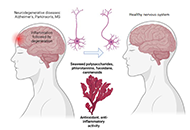 From the ocean to the brain: harnessing the power of marine algae for neuroprotection and therapeutic advancesOpen AccessReviewRecent investigations have shed light on the potential of seaweed, an abundant source of bioactive compounds, to mitigate and combat neurodegenerative diseases. In this comprehensive review, the acc [...] Read more.Leonel Pereira, Ana ValadoPublished: November 17, 2023 Explor Neuroprot Ther. 2023;3:409–428
From the ocean to the brain: harnessing the power of marine algae for neuroprotection and therapeutic advancesOpen AccessReviewRecent investigations have shed light on the potential of seaweed, an abundant source of bioactive compounds, to mitigate and combat neurodegenerative diseases. In this comprehensive review, the acc [...] Read more.Leonel Pereira, Ana ValadoPublished: November 17, 2023 Explor Neuroprot Ther. 2023;3:409–428